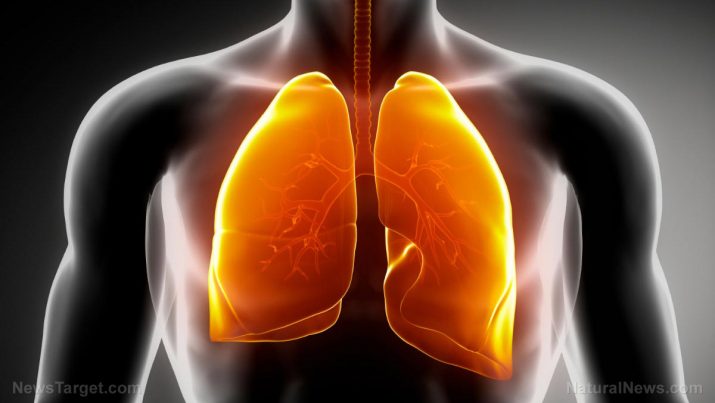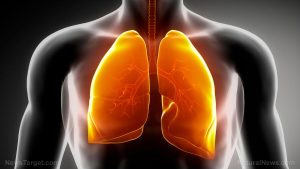
Paracoccidioidomycosis – causes, side effects and treatments at NaturalPedia.com
Wednesday, July 18, 2018 by Zoey Sky
http://www.naturalpedia.com/paracoccidioidomycosis-causes-side-effects-and-treatments-at-naturalpedia-com.html

Patients infected by a fungus called Paracoccidioides brasiliensis (P. brasiliensis) can develop a chronic infectious disease called paracoccidioidomycosis (PCM).
While PCM often affects the lungs, the infection can spread to a patient’s mucous membranes, skin, and other parts of the body. The disease can also affect the specialized cells that can be found along the walls of blood and lymphatic vessels and eliminate cellular waste (reticuloendothelial system).
If a patient with PCM doesn’t receive immediate medical attention, they may suffer from life-threatening complications. Most cases of paracoccidioidomycosis occur in South and Central America.
Paracoccidioidomycosis is also called Lobo disease, Lutz-Splendore-Almeida disease, paracoccidioidal granuloma, and South American blastomycosis.

Known side effects of paracoccidioidomycosis
The side effects of paracoccidioidomycosis often manifest at least several weeks, months, or even years after a patient is initially exposed to the fungus. Side effects linked to PCM can vary depending on the body area affected by the disease.
The side effects of paracoccidioidomycosis that target the lungs usually include:
- Chest pain
- A cough
- Dyspnea/difficulty breathing
- Fatigue
Adults with this form of PCM can also suffer from fibrous and degenerative changes in the lungs. This can cause emphysema (the progressive loss of lung function).
PCM can also cause a condition called cor pulmonale, which involves heart disease caused by abnormally high blood pressure within the vessels. The pressure can move blood away from the lungs and toward the heart.
In mucocutaneous paracoccidioidomycosis, ulcers or granulomatous lesions may form on the mucous membranes, like the mouth and nose.
When paracoccidioidomycosis targets the lymphatic system, a patient may experience lymphadenopathy/the generalized swelling of lymph nodes in various body areas such as the axilla/underarm area or the neck. Infected lymph nodes may cause pain and produce pus.
In visceral paracoccidioidomycosis, other body organs like the intestines, liver, and/or spleen are infected. This infection usually involves the adrenal glands and chronic adrenal involvement can cause abnormally low levels of adrenal hormones.
Risk factors for paracoccidioidomycosis may include:
- Age — Patients with PCM are usually aged 20 to 50 years old.
- Gender — The chronic adult form of PCM is more common among males than in females. However, the sub-acute juvenile form of PCM affects both genders equally.
- Location — While PCM is rare in the U.S., patients who have visited, or migrated from South and Central America can develop the disease.
Body systems harmed by paracoccidioidomycosis
Paracoccidioidomycosis may cause the following complications:
- Dysphagia (difficulty swallowing)
- Dysphonia (difficulty speaking)
- Hemoptysis (coughing up blood)
- Lymphadenopathy/disease of the lymph nodes – Involves lymph nodes that are abnormal in consistency, number, or size.
- Oral ulceration
Food items or nutrients that may prevent paracoccidioidomycosis
The following foods or nutrients can help prevent paracoccidioidomycosis or address its side effects:
Vitamins and minerals:
- Vitamin C
- Vitamin E
- Selenium
- Zinc
Herbal remedies:
- Echinacea
- Garlic
- Goldenseal (Hydrastis canadensis)
- Licorice root
- Pineapple extract with bromelain
- Quercetin
Treatments, management plans for Paracoccidioidomycosis
Paracoccidioidomycosis is usually treated with antifungal drugs like itraconazole, ketoconazole, and fluconazole.
Lifestyle changes that can help patients manage the disease include:
- Following a healthy diet that includes a lot of fruits and vegetables.
- Getting enough bed rest.
- Quitting alcohol and smoking.
Where to learn more
- 10 Plants and Herbs that Boost Lung Health, Heal Respiratory Infections and Repair Pulmonary Damage
- Cure fungal infections naturally
- How to treat respiratory tract infections with everyday foods and spices
- Vitamin D may be your best defense against respiratory infections, new science finds
Summary
Patients infected by a fungus called Paracoccidioides brasiliensis (P. brasiliensis) can develop a chronic infectious tropical disease called paracoccidioidomycosis (PCM).
The side effects of paracoccidioidomycosis that target the lungs usually include chest pain, a cough, dyspnea, and fatigue.
Paracoccidioidomycosis may cause complications like dysphagia, dysphonia, hemoptysis, lymphadenopathy, or oral ulceration.
Vitamins and minerals like vitamin C and E and herbal remedies like echinacea, garlic, and goldenseal can help prevent paracoccidioidomycosis or address its side effects.
Paracoccidioidomycosis is usually treated with antifungal drugs like itraconazole, ketoconazole, and fluconazole.
Lifestyle changes that can help patients manage the disease include following a healthy diet that includes a lot of fruits and vegetables, getting enough bed rest, and quitting alcohol and smoking.
Sources include:
Tagged Under: Tags: Paracoccidioidomycosis





